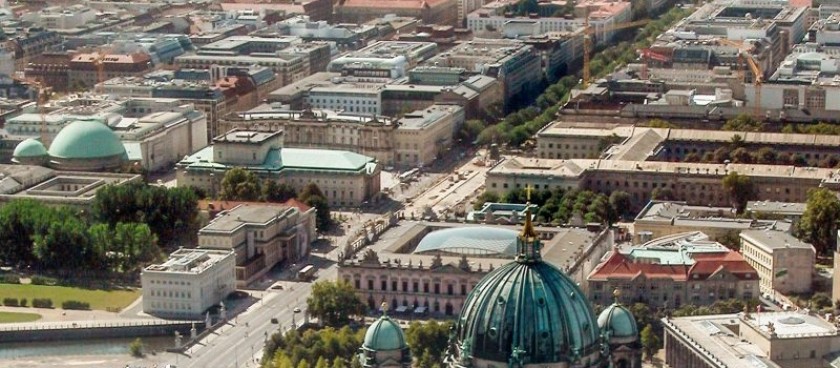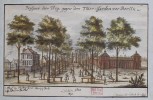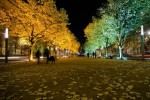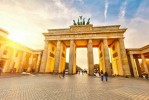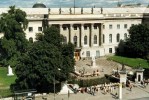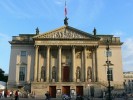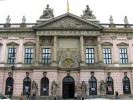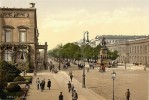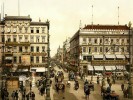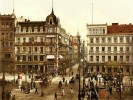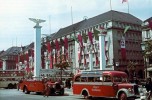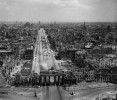- #DE33
- Unter den Linden, 10117 Berlin, Germany
- 52.5170205, 13.3890190 Copy to clipboard Copy
-
#Family time , #Viewpoints
You probably already guessed which one. Linden trees are the main decoration of this street.
"Linden" story
Unter den Linden starts at Paris Square and ends near the Palace Bridge, crossing the Spree.
The first trees appeared on the site of the modern street in 1647 at the behest of Friedrich Wilhelm. They supposed to decorate the road of the Elector from the palace to the hunting grounds in the Tiergarten. Instead, a thousand lindens and the same number of walnut trees formed a cosy alley.
A new stage in the history of the street began in 1770 when Frederick II's houses demolished that did not meet the emperor's ideas of beauty. Instead of them, ceremonial buildings grew, and then trees. How the rich mansions of the nobility appeared here, and the new elegant street became the "face" of the capital.
Now the western section of the boulevard, which runs from the Brandenburg Gate to the Great Tiergarten, bears the name of 17 June street.
The street today
In length, Unter den Linden stretches for 1.39 km, in width reaches 60 m. It originates from Paris Square (Pariser Platz), leading to the Palace Bridge (Schlossbrücke) across the Spree River and passing into ul. Karl Liebknecht-Straße. The street from the Brandenburg Gate and through the Tiergarten park is now called Street 17 June (Straße des 17. Juni).
Today, nothing but hunting sausages in the menus of cafes and restaurants reminds of the elector's hunting grounds. From those old times, only trees and the "royal path" remained. A carriageway now passes through it. As soon as you leave the central part of the boulevard, you immediately find yourself among the many attractions: the Brandenburg Gate, Zeichhaus, the Cathedral, the Opera, the University, the palaces of William I, crown princes, princesses. Russians are pleased to see their embassy and Aeroflot office here. The boulevard ends with a bronze equestrian statue of Frederick the Great, which Berliners ironically call Old Fritz. The tremendous Prussian monarch looks at those who follow the "path of the king."
Another circumstance may disappoint the potential future tourist. On the boulevard "Under the Lindens," almost everything is "fake". Many buildings, including those from the Historic Quarter, were rebuilt after the Second World War. And linden trees now start differently than before, right behind the bridge, planted 500 meters away from it, and many again after the war.
What to see
For a long time, this boulevard was considered a kind of "showcase" of Germany. And new streams of tourists flock here. What awaits us on the central alley of the city?
First, a meeting with the Brandenburg Gate, the only city gate that survived on the territory of Berlin.
The oldest university in the city, the Humboldt University, is also located here. It founded in 1809 at the request of W. von Humboldt. A year later, classes began to held there. In the 19th century, the university was considered one of the most influential scientific centres in Europe.
The most diverse buildings adorn the boulevard. There are also palaces among them. The Palace of the Crown Princes is an example of late classicism architecture. At the beginning of the 20th century, it housed a museum of modern art.
During the Second World War, it destroyed. Now the palace has been completely restored. It hosts various exhibitions and cultural events of the city.
The Princess Palace is the former residence of the Hohenzollerns. This building was also significantly damaged during the hostilities. Now the construction of the palace is occupied by the Opernpalais - a gastronomic complex.
Another attraction of the famous boulevard is the Berlin State Opera. The theatre is one of the oldest and largest theatres in Germany. It founded in 1742.
No less famous is another building of the famous street - Berlin Cathedral, the largest evangelical church in the country. This baroque cathedral built towards the end of the 19th century. Among its treasures are the Hohenzollern crypt and the organ by Wilhelm Sauer.
The oldest building on the boulevard is Zeikhhaus. In 1695, they began to build it as an arsenal. At different times, various famous architects worked on it. The construction was completed only in 1730. Now it houses a museum.
Walking along Unter den Linden, you will notice a complex of several similar buildings. The Embassy of the Russian Federation. It occupies an impressive classicism building, which is an architectural monument.
How to get there
Take metro U55 or city train S1, S2, S25 to Brandenburger Tor station.
